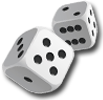



play board games
Board game reviews, strategy tips & session reports
BioShock Infinite Board Game Review
 Stats:
Stats:
No. of players: 2 or 4
Amount of time to play: 60-90 min
Age requirements: 13+
Set-up time: 5-10 min
BioShock Infinite: The Siege of Columbia places you in the role of one of two factions warring over a floating city. You must score 10 VPs first to win. But look out for Booker he might put a kink in your plans.
BioShock Infinite Rules Description:
BioShock Infinite: The Siege of Columbia is set in the same world as the video game. You take the role of a leader of either the Founders of Vox Populi. You must build an army to control locations and meet objectives in order to score 10 VPs first and win.
After you choose your faction you randomly select the leader you’ll use. Each leader has a special ability that will help you in certain situations throughout the game. Next you set up your starting units and structures and draw five cards from your faction deck. Once you place the rest of the elements around the board you are ready to begin.
The cards in your faction deck can be used for a few different things. You can use them for their combat, influence or silverling value at different phases of the game. They also have an ability you can unlock by earning or purchasing upgrades.
At the beginning of each round a World Event card is drawn. This event will usually help one faction and hurt the other. The current first player decides if he wants to discard one or more cards to add their influence total to the vote. If they do, they simply set the cards face-down by the board. The second player can then choose if they want to discard any cards for their influence value. If they do both players show their cards and the current losing player rolls a white die and adds the result to their total. This white die represents Booker’s vote and the winner decides which faction wins the vote. The World Event card also determines how Elizabeth acts, where Booker moves and if he is looking for a fight. Whoever played the most influence becomes the first player and they take their turn.
On your turn you can discard cards for their silverling value then recruit and build new structures. Next you may move up to four units. You can move to any adjacent space or move along the Sky-Line. When your unit takes the Sky-Line it may move as many spaces as it wishes, but each time you must roll the three Sky-Line dice. Failure to roll a successful move result forces you to lose cards or the unit that is moving.
After your units have moved if they are in the same space as an enemy unit or structure you fight. To begin combat the attacker determines if he wants to discard cards to add their attack value to their roll. These cards are placed face-down by the board and the defender does the same. There are three unit and structure types: leader, special and common. You roll dice based on the number and type of unit in the combat. After rolling you add the card totals to determine your total attack value. When comparing totals the defender wins ties. The loser of a combat must remove a unit from the battle and move the rest of their units to the closet stronghold. If there isn’t one the units are lost.
After all players have taken their turn you may discard any cards you like and draw back up to five cards. The last you do is flip over another victory point card. The game starts with one of these in play. On your turn if you meet the conditions you can claim victory point cards.
Throughout the game you may upgrade units and unlock their special abilities. You do this by winning a combat, purchasing one, becoming the first player or claiming a victory point card. There is one stipulation though. You can never have more than three upgrades than your opponent.
Once one player (or faction in a four player game) has 10 VPs they win.
Quick Review of BioShock Infinite:
BioShock Infinite: The Siege of Columbia is medium-weight board game. You must manage your hand, press your luck and roll well to win. You do not have to be a fan (or player) of the video game to enjoy this board game. I have never played the video game and though it helped to peruse the internet and ask friends for information about the game, I think you can enjoy it either way.
The components for this game are excellent. The figures look really good and the art does too. The board is a little busy but so much that it is not functional. The rules are well written and have a bunch of examples.
One of the coolest things about this game is the Sky-Line movement. It adds some press your luck to moving your units but also lets them get most anywhere on the map. This is important as some objectives will require you to be in or control certain locations.
The way the cards are used for so many things and yet only having five adds a fun resource/hand management aspect to the game. You really need to think about what cards you’ll use for offense, getting cash and voting on the World Event. At times the cards are very important and it makes losing them from failed Sky-Line moves even more crucial.
I like the feel of playing this game. Your decisions matter and the game is full of tension.
There are a couple things I don’t like about the game. First the four player game is not a good as the two-player version. It takes a bit too long and doesn’t flow as well. Since you decisions are meaningful and you have lots of options for how you use your cards downtime between turns may be an issue. This is accentuated in the four-player game.
Lastly there are a few things to be aware of before playing BioShock. This is game has both cards and dice. There will be luck involved and it might not go your way. Also there is a lot going on in this game and you are likely to play it wrong the first couple of times. It is not that the game is hard there is just a lot to keep track of and there is a good chance you’ll forget something as you try to learn it.
BioShock Infinite: The Siege of Columbia is a fun game. If you like board games and are a fan of the video game you should pick it up. If you have read this review and like the sound of this game’s mechanics, I highly recommend it. If you are still on the fence, I suggest you still try it out. You may be shocked at how fun it can be.
Score and synopsis: (Click here for an explanation of these review categories.)
Strategy 4 out of 6
Luck 5 out of 6
Player Interaction 6 out of 6
Replay Value 4 out of 6
Complexity 4 out of 6
Fun 5 out of 6
Overall 5 out of 6

Leave a Reply